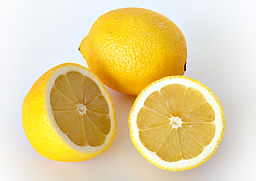Ices or sherbets were as much a desirable treat in Regency England as they are today. In my Regency Historical Romance novels, my characters often go to Gunthar’s when they want to enjoy a frozen treat, and lemon was an especially popular flavor, but ices were enjoyed all year round at home and at social gatherings. Even in winter, a room crowded with guests and candles and alcohol became stifling, leaving the guests the need for a cool refreshment.
According to the noted Regency researcher, Nancy Mayer, ice cream was a year-round treat in Russia because in the winter, the ice cream was warmer than the outside temperature. She also states that in India, cooks put the ingredients into a bag (what kind of material they used was not clear, but the sherbet or ice cream couldn’t leak through it) which was thoroughly soaked and put on a line with a pulley and pulled rapidly back and forth while servants fanned it.
The book Domestic Comforts tells about ice houses and ice ponds the wealthy built for creating and storing ice. Ice was also was imported from northern countries including Canada – once the custom agents realized it couldn’t be treated like other materials and just stacked on the dock or warehouse. Uh, doy.
But what if one didn’t have access to ice and my lady is craving one? Or what if my lord wishes to cool his wine? Never fear, saltpeter is here!
Kathryn Kane, on her blog Regency Redingote states:
“During the Regency, saltpetre was most likely to be used as a coolant in England as a scientific novelty, or for cooling when no stored ice or snow was available. An experienced and well-prepared Regency butler might keep ten to twenty pounds of saltpetre on hand in order to ensure he could cool enough wine or other bottled beverages for a family meal in the absence of ice, perhaps after an unusually warm and snow-less winter.”
Sorbets and ices were also a popular way to cleanse the palate between courses at dinner.
Amy Guttman’s article on THE SALT “Three WaysCooking Has Changed Over The Last 300 Years” there is a great article on “The Unknown Ladies Cookbook, a 300 year old compendium of family recipes from between 1690 and 1830.”
“What we think of today as dessert, they would have served as a second course,” Gray tells The Salt. “Their third course, or dessert, would be ice cream, biscuits or fruit. But today, we tend to serve those things at the same time to end a meal.”
In that same article is a recipe for lemon cream, which sounds to me like a lemon pudding:
‘Lemmond Cream:’ “To four large lemmons squeesd put 3 qrs of a pd of the finest loaf sugar, 8 or 9 spoonfuls of water & a piece of the peel. Set it over the fire untill the sugar tis melted. Put in the whites of 4 eggs & strain it through a diaper napkin, doubled. Sett it on ye fire a gain & stir it all ye while. When it grows thick, take it off. Put in two spoonfuls of orange flower water. Lay some shreds of boiled lemmon peel at the bottom of the glasses.”
If you can follow those directions, you are a better chef that I am!
Here’s a much more user-friendly recipe for lemon ice from Jane Austen Centre blog, in an article entitled Lemon Ice by Laura Boyle.
2 cups sugar
4 cups water
1 cup fresh lemon juice
2 tbsp grated lemon rind
Dash of Salt
1. In a saucepan, combine sugar, salt, water and lemon rind.
2. Boil for 5 minutes. Cool.
3. Add lemon juice to cooled sugar water.
4. Churn freeze (in Ice Cream maker) or pour into a dish and cover.
5. Freeze at least 6 hours. Break frozen mixture into chunks.
6. Place chunks in food processor; process until smooth.
This method produces more of a “smoothy” texture. Makes 1/2 gallon. This looks especially tempting served inside half of a lemon. Simply cut your lemons in half lengthwise before beginning process. Squeeze out the juice to be used in the recipe, cut a small slice of peel off the bottom of the lemon half so that it sits upright. Scoop out excess pulp and membrane, cover in plastic until ready to fill with frozen mixture. Garnish with mint or berries.
(I think it would also look delicious if garnished with a curl of lemon peel.)
So the next time you want to get in touch with your inner Regency romance heroine, indulge in a little lemon ice and stay cool while you’re at it.

